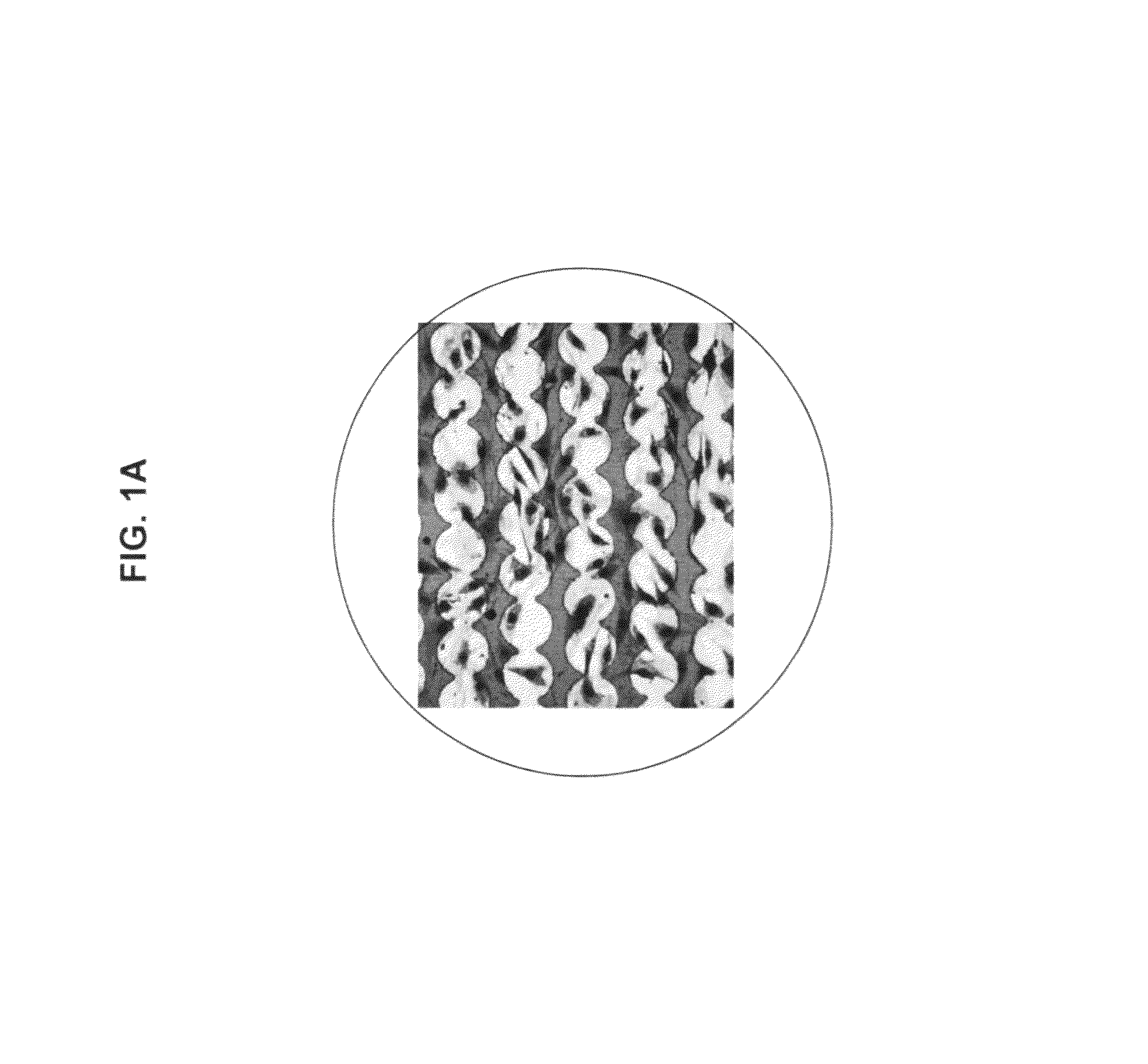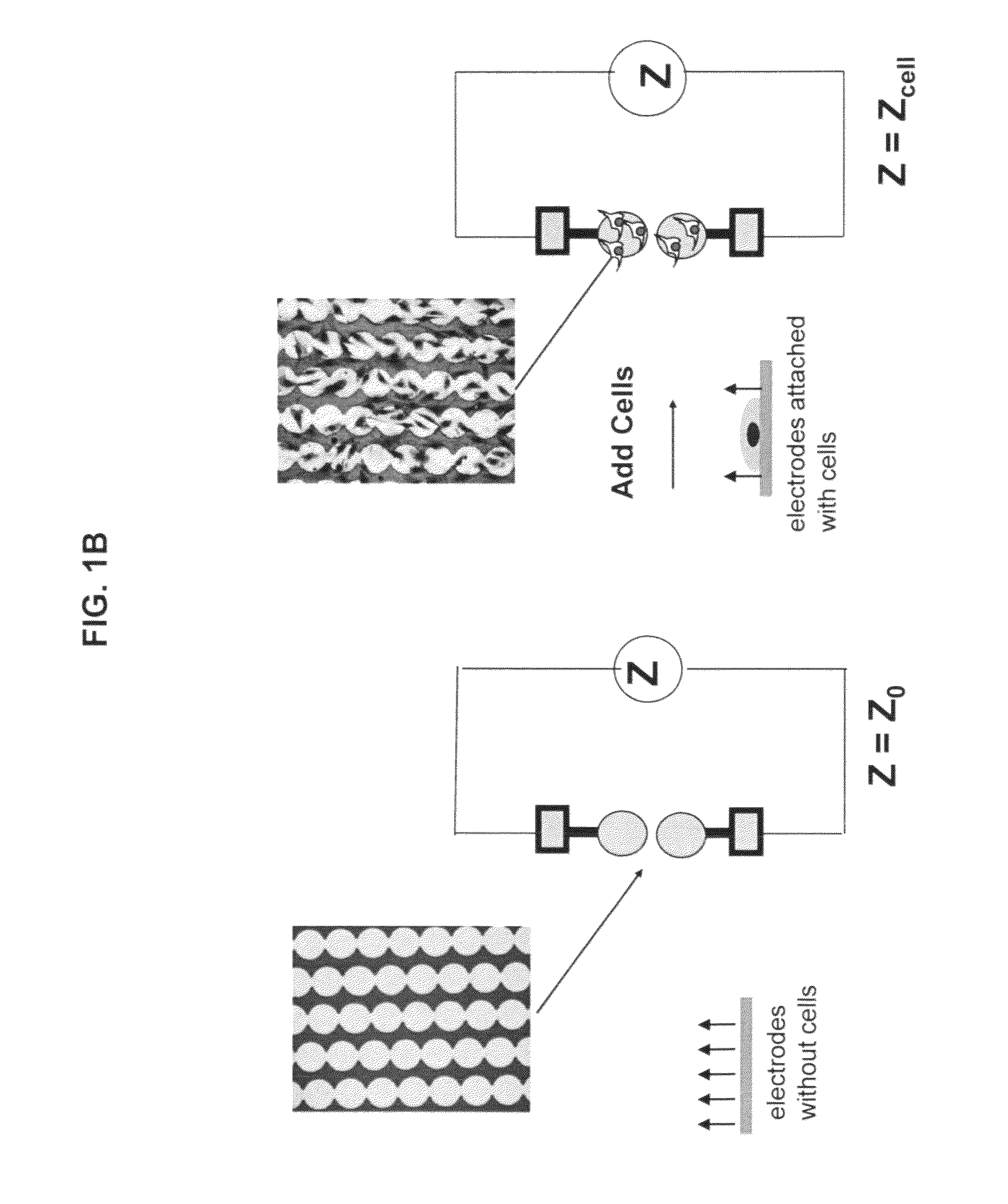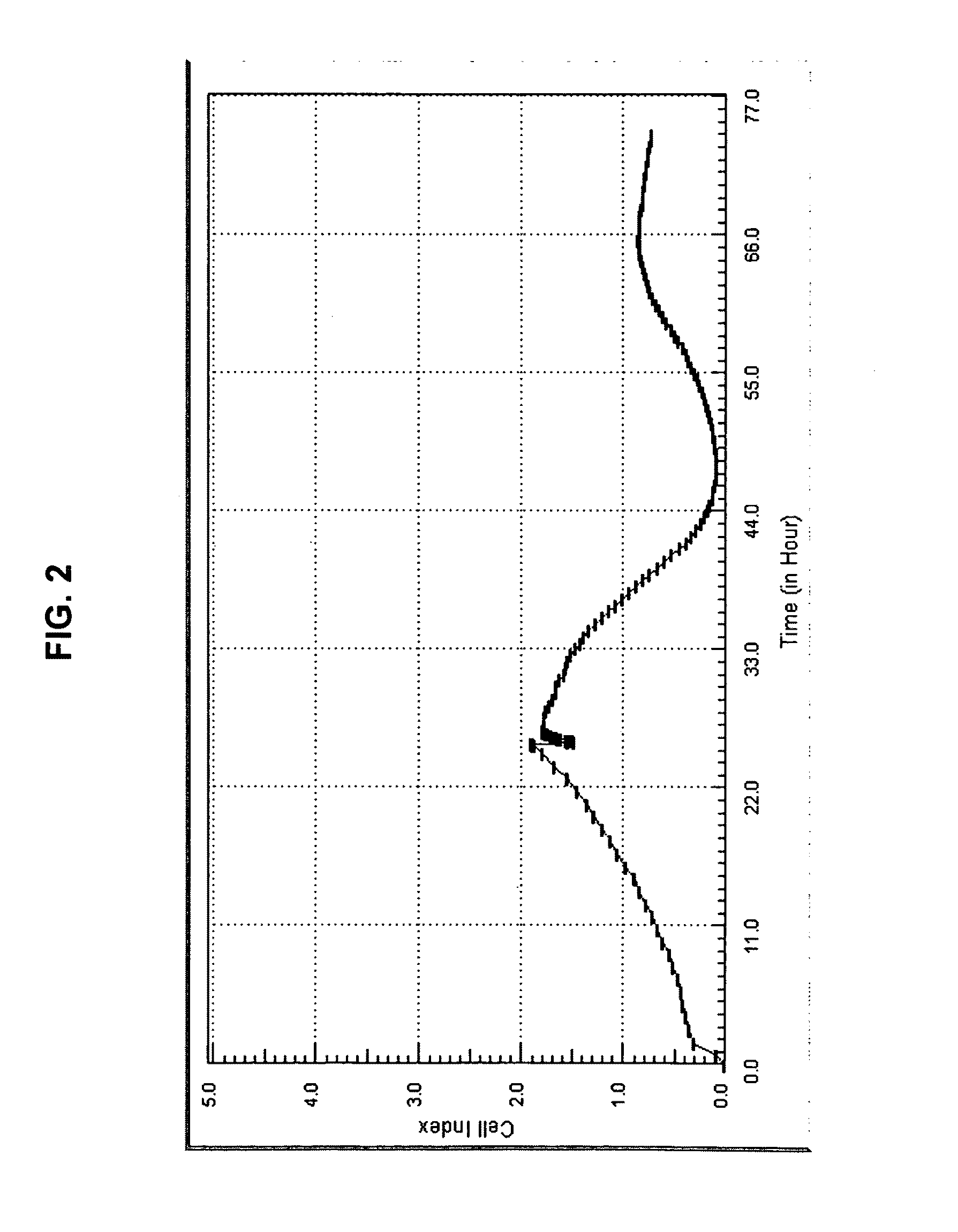Use of impedance-based cytological profiling to classify cellular response profiles upon exposure to biologically active agents
a cytological profiling and impedance-based technology, applied in the field of impedance-based cytological profiling to classify cellular response profiles upon exposure to biologically active agents, can solve the problem of general non-kinetic information about cellular response processes in these conventional multi-dimensional profiling technologies
- Summary
- Abstract
- Description
- Claims
- Application Information
AI Technical Summary
Benefits of technology
Problems solved by technology
Method used
Image
Examples
example 1
Comparing Curves
[0142]A variety of nonlimiting approaches may be used to identify similarities between curves and thus correlate biologically active agents to specific mechanisms. In one approach, the correlation coefficient between the two curves is used to define the similarity degree between the two curves. For example, give a curve one being
C1(ti); {i=1, 2, 3, . . . N},
and another curve being
C2(ti); {i=1, 2, 3, . . . N},
where curve one attains a value C1(ti) at a time point ti and curve two has a value of C1(ti) at the time point ti.
[0143]The correlation coefficient between these two curves is calculated using this approach,
[0144]CC(1,2)=N∑i[C1(ti)C2(ti)]-∑iC1(ti)·∑C2(ti)[N∑i[C1(ti)]2-(∑iC1(ti))2][N∑i[C2(ti)]2-(∑iC2(ti))2].
The larger the correlation coefficient, the more similar the two curves are. Since calculation of correlation coefficients is for comparing and categorizing cell responses to biologically active agents, thus, the time points used for c...
example 2
Determining the Distance Between a Curve and Curve Group
[0163]Assuming a is a single curve, B is a curve group which contains M curves, there are several ways to define the distance between a curve a and a curve group B. The curve group B contains M curves, being curve b1, b2, b3, . . . bM. One distance between curve a and curve group B is the average distance, defined as follows:
[0164]d(ave)aB=1M∑k=1MdabkHeredabkisdefinedasdabk=∑i=1n(Yai-Ybki)2
Here, Yai is the y value of curve a at ith-time point i, Ybki is the y value of curve bk at ith time point.
The minimum distance between curve a and curve group B may be determined by:
d(min)aB=min(dab1, dab2, . . . , dabM)
The maximum distance between curve a and curve group B may be determined by:
d(max)aB=max(dab1,dab2, . . . , dabM)
example 3
Calculating Distances Between Two Curve Groups
[0165]In many cases the distance between two curve groups must be determined. Assuming A is a curve group with J curves: being curve a1, a2, a3, . . . aJ, B is another curve group with M curves being curve b1, b2, b3, . . . bM, the distances between A and B are defined as follows:
[0166]The average distance between curve group A and curve group B can be calculated by:
[0167]d(ave)AB=1JM∑l=1J∑k=1Mdalbk
[0168]The minimum distance between curve group A and curve group B may be the minimum distance between any curve pair, one of the pair from curve group A and another from curve group B, being determined by:
[0169]d(min)AB=minl=1:J;k=1:M(dalbk)
The maximum distance between A and B may be the maximum distance between any curve pair, one of the pair from curve group A and another from curve group B, being determined by:
[0170]d(min)AB=minl=1:J;k=1:M(dalbk)
PUM
| Property | Measurement | Unit |
|---|---|---|
| time | aaaaa | aaaaa |
| length | aaaaa | aaaaa |
| length | aaaaa | aaaaa |
Abstract
Description
Claims
Application Information
 Login to view more
Login to view more - R&D Engineer
- R&D Manager
- IP Professional
- Industry Leading Data Capabilities
- Powerful AI technology
- Patent DNA Extraction
Browse by: Latest US Patents, China's latest patents, Technical Efficacy Thesaurus, Application Domain, Technology Topic.
© 2024 PatSnap. All rights reserved.Legal|Privacy policy|Modern Slavery Act Transparency Statement|Sitemap



